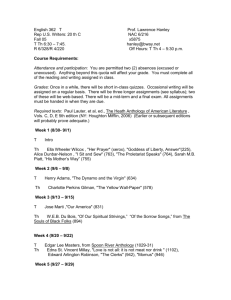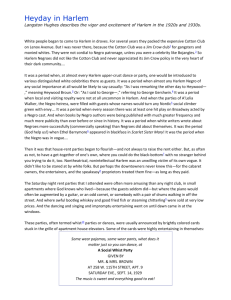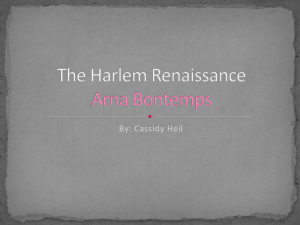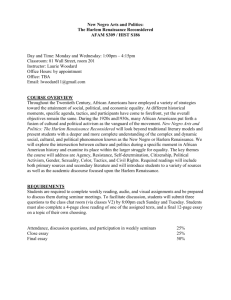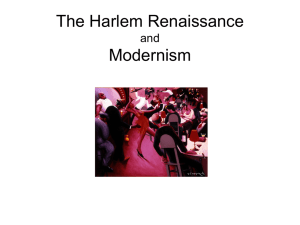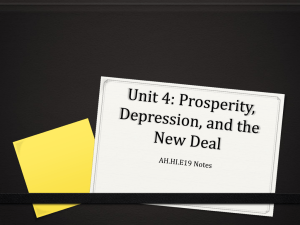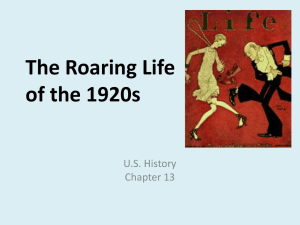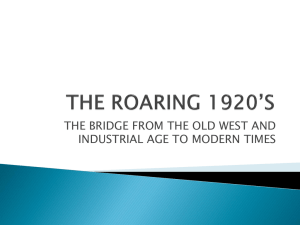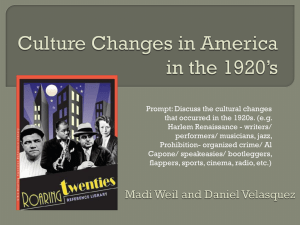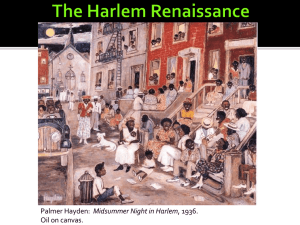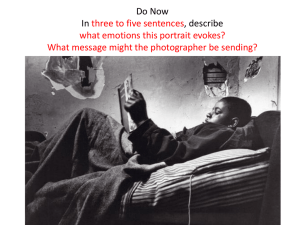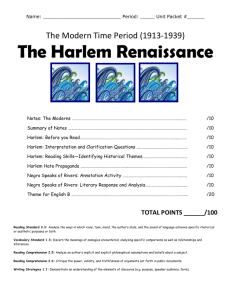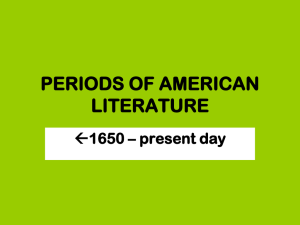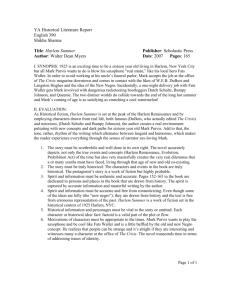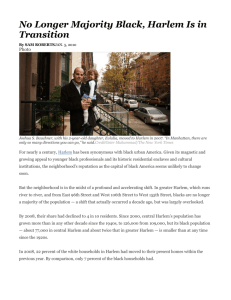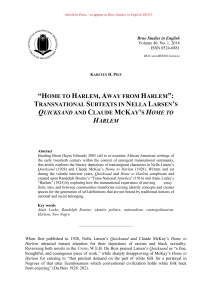The Harlem Renaissance 1917
advertisement
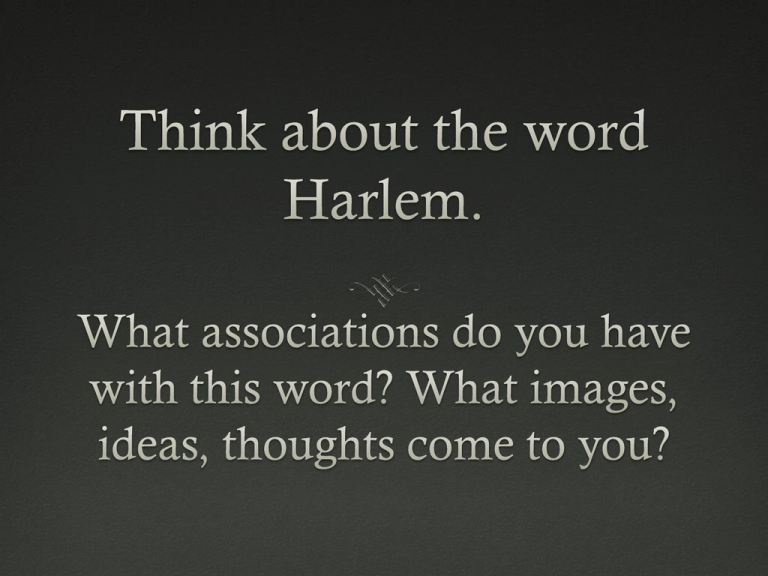
Harlem Renaissance Overview The Movement “A literary, artistic, and intellectual movement that kindled a new black cultural identity” Critic and teacher Alan Locke declared that through art, “Negro life is seizing its first chances for group expression and self determination” Locke’s “New Negro” transformed “social disillusionment to race pride” Background As the American Civil War came to an end, African-Americans experienced a growth in educational and employment opportunities Black middle class was created 1896 – Plessy v. Ferguson (court case that deemed segregation acceptable) Boll weevils ruin cotton crops in the South, causing economic depression (less labor opportunities) African-Americans began to move North by the millions to find work and to escape racial prejudice Known as “The Great Migration” Why Harlem? Neighborhoods in Harlem were first built to house white workers commuting to the city Housing developments grew faster than the transportation that would bring residents White-middle class abandons Harlem; gentrification of Mid-town forced many blacks to leave the area As a result, between 1900-1920, the population of AfricanAmericans in NYC doubled Many of the country’s best black artists, entrepreneurs and intellectuals settled in Harlem Became known as “The Black Mecca” Notable landmarks of Harlem Apollo Theatre The Cotton Club Striver’s Row Notable Landmarks Striver’s Row The Cotton Club Art of the Period Jacob Lawrence – “Street Life” Archibald Motley “Nightlife” Archibald Motley “The Jazz Singers” Literature of the Movement Whites fascinated by the world of Harlem Publishing industry sought out black writers Much of the literature focused on realistic portrayal of black life Movement’s intent was not political, but aesthetic Any attempt to defy racial prejudice through writing was “secondary to the expression of our dark-skinned selves” – Langston Hughes A New Perspective Emerges Through Art The Old Negro Characterized by “implied inferiority” Black artists/writers did not control means of production Did not control editorial changes, etc. The “New Negro” Racially conscious Self-assertive Articulate/Intellectual In charge of what they produced Writers of the Period Black urban migration, combined with the willingness of Americans to experiment during the 1920s and the rise of black intellectuals like Alan Locke and W.E.B. DuBois contributed to the writing styles of this era Notable writers and poets of the period: Langston Hughes Countee Cullen Zora Neal Hurston Nella Larson Jean Toomer Literary Characteristics Creation of art and literature should serve to “uplift” the race Some writers explored themes such as alienation and marginality Some writers relied on the rich African-American tradition of folklore, black dialect, oral culture, jazz and blues music to create different forms of writing Some writers wrote about the growth of the African-American into a more urban and sophisticated person “Reflects the multiple ways the black experience was perceived and expressed” Focus Poet – Langston Hughes (1902-1967) Some of Hughes’ most famous poems: Harlem (A Dream Deferred) I, Too Negro Speaks of Rivers Theme for English B Cultural and Political Impact Politics: NAACP founded in 1909 – (National Association for the Advancement of Colored People) paved way for other political groups of the same nature Negro Improvement Association founded by Marcus Garvey Culture: The introduction and transformation of the world of Jazz Musicians such as Duke Ellington, Billie Holliday Duke Ellington statue End of the Renaissance End of the 1920s brought the end of white infatuation with Harlem The Great Depression hit black Americans especially hard Leaders who came to rise in Harlem shifted focus from art and intellect to financial and social issues Tensions mounted between blacks community and white shop-owners in Harlem and culminated in the Harlem Riots of 1935 – first modern race riot – Violence shattered image of Harlem as a “mecca” Paved the way for future African-American writers like Gwendolyn Brooks

